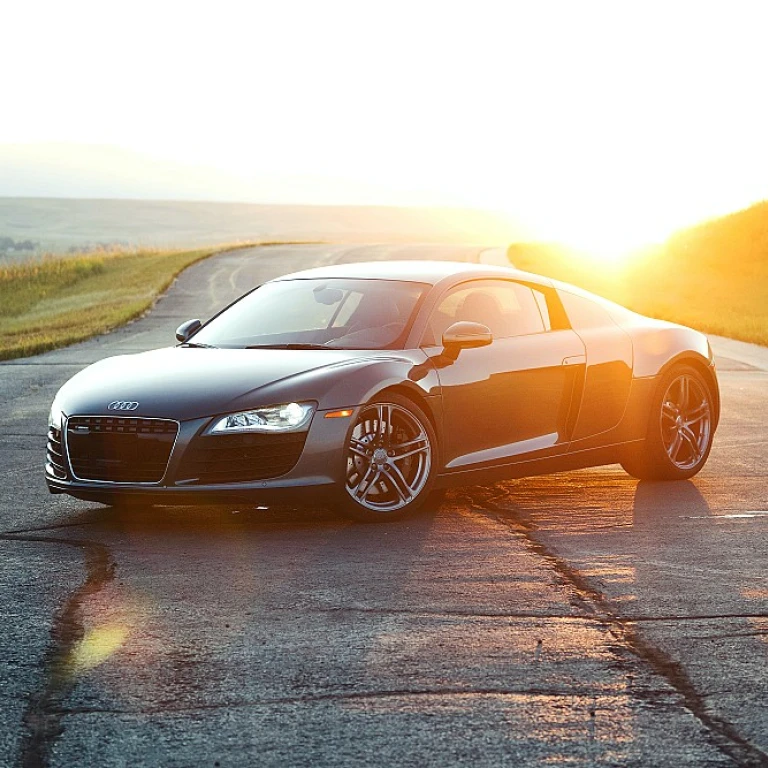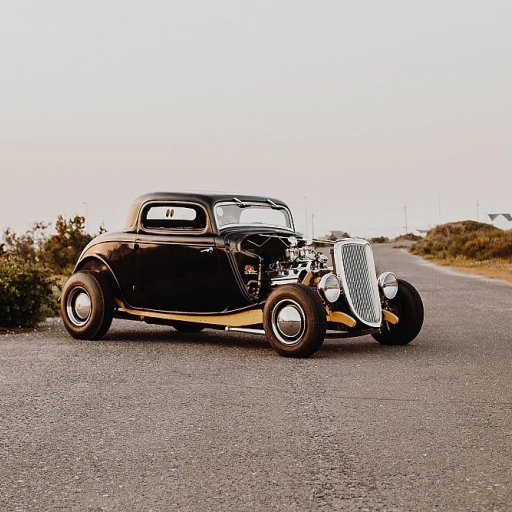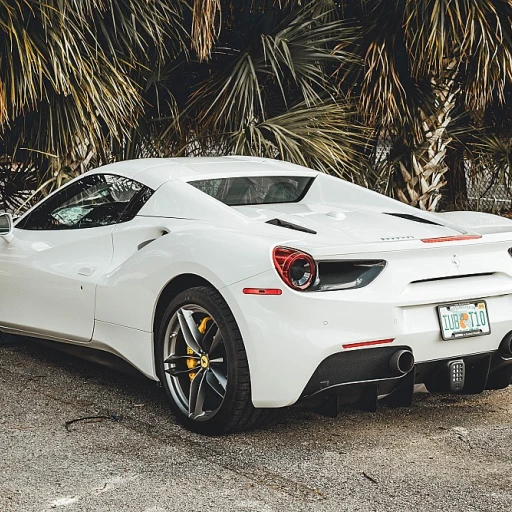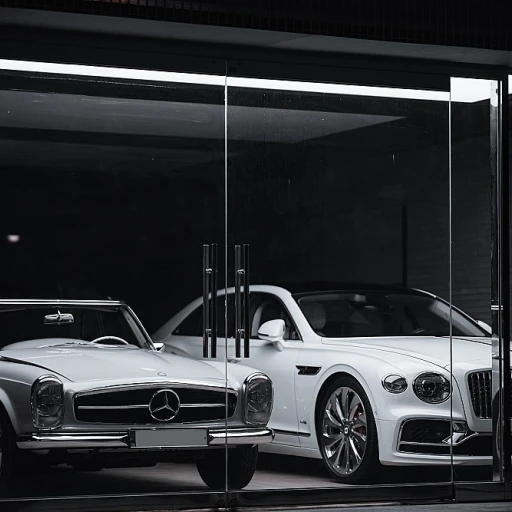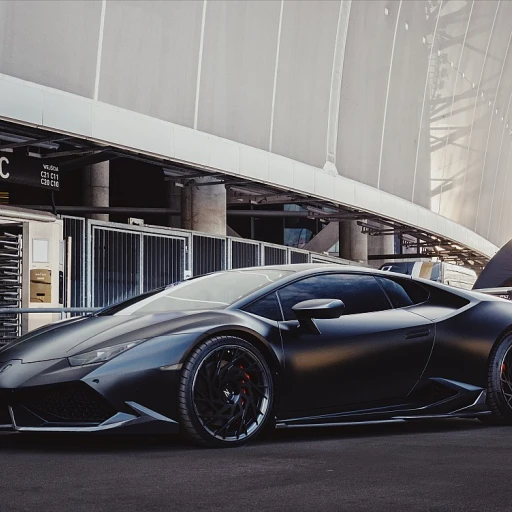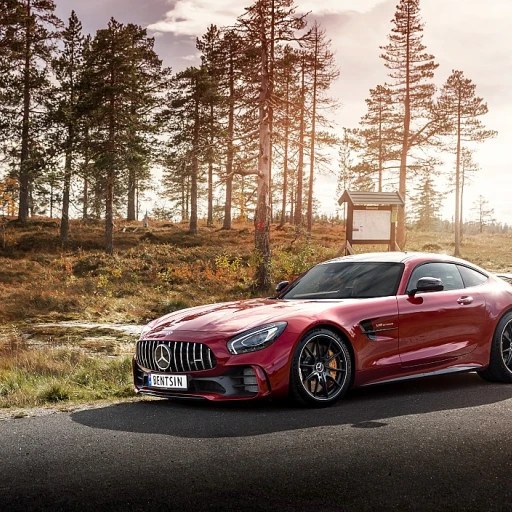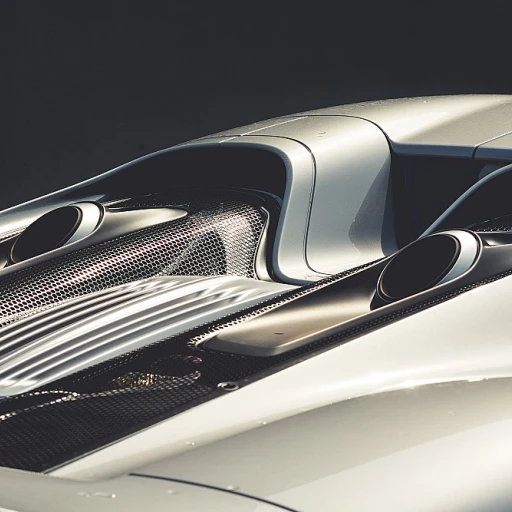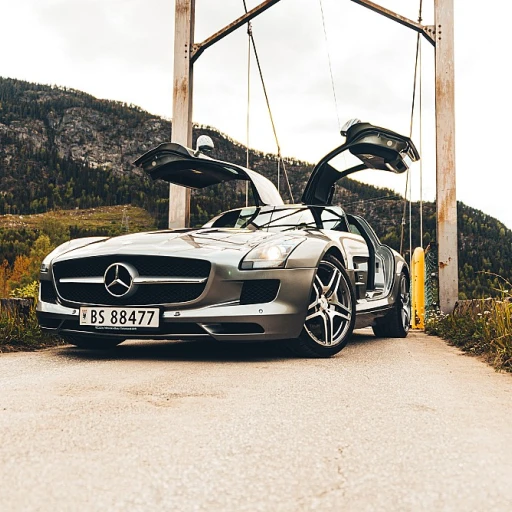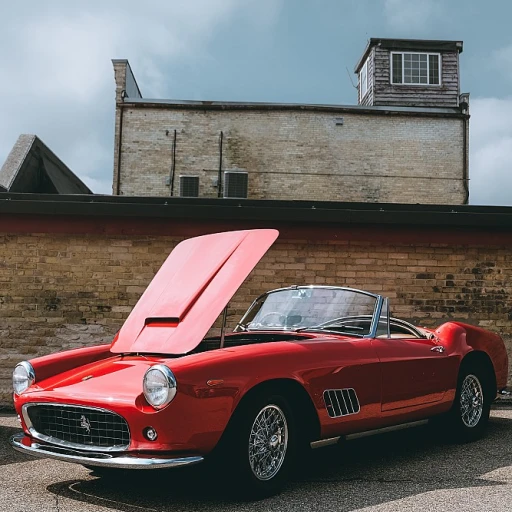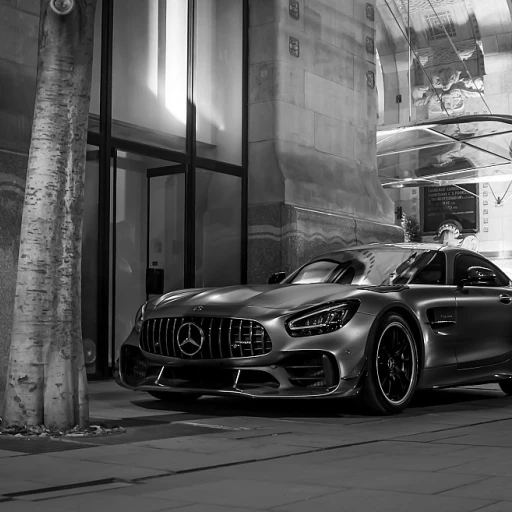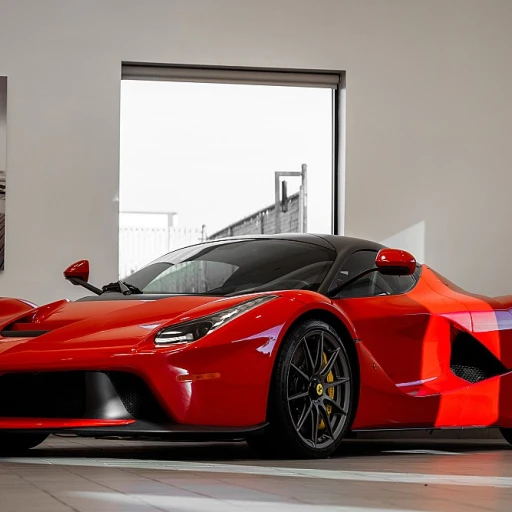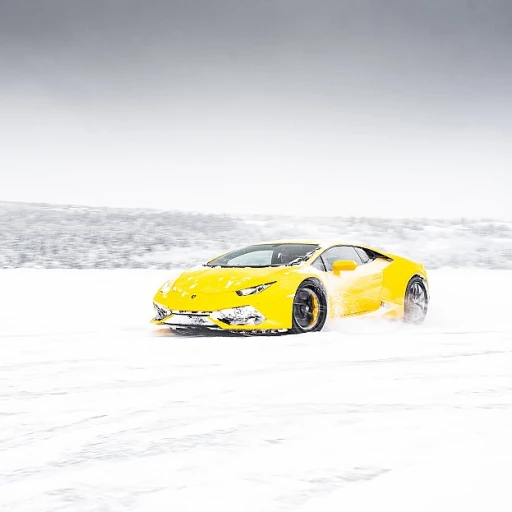The golden era of 90s sports cars
The automotive renaissance of the 90s
The 90s were quite the trip back in time for car enthusiasts. This decade is widely hailed as a golden era for sports cars and for some real good reasons. Engine advancements and performance had car aficionados buzzing with excitement. Car manufacturers, from Porsche to Ferrari, unleashed a series of models that are still revered today.
Cars like the Porsche Turbo and Ferrari F355 redefined what it meant to have speed on wheels. Meanwhile, Japanese giants like the Toyota Supra and Nissan Skyline began to challenge the dominance of European sports cars. It's like the designers and engineers were competing in some kind of horsepower arms race, and the cars born from this era still give today's tech-laden vehicles a run for their money.
But it wasn't just all about sheer horsepower. Innovations in design and sports performance reached new heights. The use of twin turbo engines, as seen in the Nissan Skyline GT-R and Toyota Supra Turbo, led to cars that could accelerate from 0 to 60 mph in mere seconds. The nimbler, lighter body designs, made famous in models like the Lotus Elise and Mazda RX-7, resulted in unprecedented speed and agility on the race track.
To sum it up, the 90s witnessed an extraordinary blend of art and science on four wheels. Cars from this period didn't just hit you with power; they seduced you with a free spirit of innovation and fearless engineering. That's why these beauties have transcended time, becoming modern-day treasures that are coveted by collectors worldwide. For those interested in investing, investing in limited edition luxury cars might be a golden opportunity.
Iconic models and their standout features
Highlighting game-changing models
The 90s gifted us a line-up of sports cars that still make our hearts race. Take the 1993 Toyota Supra, for instance. Equipped with a twin turbo inline six engine, it showcased exceptional performance, hitting 0-60 mph in just 4.6 seconds. It was instantly recognizable by its voluptuous curves and aggressive stance.
Another head-turner was the Porsche 993 Turbo. Renowned for its blistering speed, this model went from 0 to 60 mph in just 3.7 seconds. The twin-turbocharged 3.6-liter flat-six engine managed both power and luxury effortlessly.
Ferrari’s top entry
Talk about the 90s without mentioning the Ferrari F355? No way! This beauty packed a naturally aspirated 3.5-liter V8 engine, producing a roaring 375 hp. Coupled with its sleek, aerodynamic design, it promised the quintessential Ferrari experience.
High-performance engineering by bmw
The 1999 BMW M Coupe brought a unique blend of brawn and elegance. Powered by a 3.2-liter inline-six engine, it offered agility paired with luxury interiors. In a nod to their meticulous engineering, this 'Clown Shoe' as it was affectionately called, was a genuine driver's car.
American muscle
Can't skip over the Dodge Viper, right? The 1992 model roared onto the scene with a behemoth 8.0-liter V10 engine, delivering 400 hp. Its unmistakable design with a long hood and side exhaust pipes cemented it as an icon.
The charm of the lotuses
The Lotus Elise and the Lotus Esprit Turbo added their own flavor. The Elise, introduced in 1996, was lightweight and agile, making it a favorite among driving enthusiasts. With a 1.8-liter engine and a mere 160 hp, it wasn't about raw power, but about precision and driving dynamics.
The Esprit Turbo, meanwhile, sported a 2.2-liter turbocharged engine, pushing out 264 hp. This model combined high performance with British elegance, attracting many with its charm and competitive speed.
Revving up japanese innovations
Japanese manufacturers truly made a mark. The Mitsubishi 3000GT and the Nissan Skyline GT-R were beasts on the road. The Skyline GT-R, particularly, is legendary with its RB26DETT twin-turbo inline-six engine which offered 276 hp, but could easily be tuned for much more.
Even the compact Mazda MX-5 Miata grabbed attention. Known for its balance and handling, the Miata, with its modest 1.6 and 1.8-liter engine options, remains a timeless favorite for many car enthusiasts.
The obsession with improving speed and performance saw significant strides in technology, making these cars highly sought-after today. For deeper insights on the lasting allure of these vehicles and their potential future impact, check out our guide: future-proofing your investment.
Engine advancements and performance
Turbocharging and the quest for performance
In the 90s, car manufacturers were on a mission to push the boundaries of performance. Turbocharging became a pivotal technology that significantly boosted engine output. The Porsche Turbo, for instance, showcased how turbocharged engines could transform a vehicle’s capabilities. With its 3.6-liter turbocharged flat-six engine, the Porsche Turbo could sprint from 0 to 60 mph in just 4.5 seconds. This was a time when car makers were vying for top-tier performance and speed, leading to some unforgettable creations.
Naturally aspirated vs turbo engines
While turbo engines were becoming the rage, there was also a steadfast group of enthusiasts who championed naturally aspirated engines for their linear power delivery and unfiltered driving experience. Take the Honda NSX (also known as the Acura NSX in the U.S.) for example, which boasted a 3.0-liter V6 engine. With an output of 270 horsepower, it relied on meticulous engineering rather than forced induction to achieve remarkable performance. The debate between turbocharged and naturally aspirated engines became a central talking point among 90s sports car enthusiasts.
Benchmark figures and time records
The 90s was a competitive period where sports cars were judged heavily on numbers. Top speeds and 0-60 mph times were the industry’s benchmarks. The Dodge Viper, with its V10 engine, was a contender in this race, able to clock speeds over 190 mph and hit 60 mph in about 4 seconds. The battle for supremacy often came down to who could shave fractions of a second off their acceleration times, setting new performance standards.
Technological advancements and engineering marvels
Technological advancements were not confined to turbocharging alone. The 90s saw the development of systems that would refine not just performance but also the overall driving experience. The BMW M3, equipped with a 3.0-liter straight-six engine producing 240 horsepower, utilized advanced engineering to balance performance with usability. It's a fine example of how sports cars of the 90s were as much about the feel and handling as they were about raw power.
From race tracks to street cars
Many sports cars of the 90s had direct links to their race track counterparts. Brands like Mitsubishi and Nissan brought racing technology to the streets. The Mitsubishi 3000GT and Nissan Skyline GT-R are prime examples, integrating advanced all-wheel-drive systems and twin-turbo engines. These models blurred the lines between professional racing machines and street-legal cars, making high performance accessible to the average enthusiast.
The cultural impact of 90s sports cars
Shaping subcultures and entertainment
90s sports cars were more than just a status symbol or a performance marvel—they culturally shifted gears in ways we still feel today. Movies like The Fast and the Furious ignited an automotive passion that resonated through youth culture and street racing scenes. Teens wanted to be Vin Diesel, and enthusiasts transformed their modest cars into powerhouses, inspired by on-screen icons.
Influences on gaming culture
Who can forget the adrenaline rush of cruising in a Lamborghini Diablo in Need for Speed? Car culture made its way into video games, influencing a generation of gamers. Titles like Gran Turismo and Forza Motorsport let players get behind the virtual wheel of 90s sports cars, driving their dreams on digital racetracks.
Music and media presence
Turn on any 90s rap video, and you'll likely see a shiny sports car. Rappers flaunted their success with Ferraris and Porsches, translating horsepower into lyrical swagger. Even rock bands and pop stars found ways to weave these cars into their stories, making them synonymous with success and rebellion.
Changing the fashion and tech scenes
The 90s also witnessed an intersection of sports cars with the tech and fashion worlds. Car manufacturers began collaborating with clothing brands for exclusive collections, and tech companies pushed for in-car innovations. The design philosophies of brands like Porsche and BMW influenced industrial design, showcasing the power of good aesthetics across industries.
Case study: the dodge viper in modern media
Let's zero in on the Dodge Viper. Seen in numerous depictions from Die Hard with a Vengeance to Need for Speed, the Viper became an icon. Its presence wasn’t merely promotional—it was inspirational, with real-world Viper owners testifying to its influence on their automotive journeys. Jason Cammisa, a renowned automobile journalist, even called it “the quintessence of 90s automotive excess” in a MotorTrend article.
A lasting impact on car clubs and communities
From Tokyo to Los Angeles, car clubs formed around these iconic vehicles. Take the Japanese car scene—markets in cities like Osaka exploded with enthusiasts dedicated to models like the Nissan Skyline and Toyota Supra, forming communities that exist to this day. These weren’t just hobbyists; they were artisans, pushing the limits of performance and aesthetics.
Controversies and criticisms
Of course, it wasn't all sun and rainbows. Controversies arose concerning the safety of high-speed street racing popularized by 90s cars. Laws ramped up, targeting illegal street activities. The environmental concerns from gas-guzzling engines also attracted criticism. Nevertheless, the cultural footprint these controversies created only added to the enduring allure of 90s sports cars.
The enduring appeal of 90s sports cars today
Timeless appeal for today's enthusiasts
The allure of 90s sports cars remains undeniable, with these automotive icons capturing the imagination of a new generation of aficionados. The nostalgia-fueled fascination is not purely about reminiscing; it stems from genuinely impressive engineering. Take the Aston Martin DB7, for instance, which featured a supercharged inline-six engine that struck an almost perfect balance of performance and elegance, enabling it to reach 60 mph in just over 5 seconds. This stunning engine found a second life in classic car shows, evidence of its enduring appeal.
Today's car collectors aren't just drawn to the raw power and performance metrics but also to the visceral driving experience these cars deliver. Many drivers describe their first time behind the wheel of a Ferrari F355 as pure bliss, an experience shaped by its high-revving 3.5-liter V8 engine, delivering an exhilarating yet raw connection to the road that's missing in many modern cars. Automobile Magazine noted it as a 'sensory overload' when it first hit the market.
The collector's market
The market for 90s sports cars has exploded, partly driven by enthusiasts who now have the means to purchase cars they idolized in their youth. A clear example is the Toyota Supra Turbo, often praised for its bulletproof reliability and potential for modification, leading to skyrocketing values in auctions. According to Hagerty's 2022 Market Trends Report, values for well-maintained Supras have risen over 40% in the past five years.
Even beyond the most well-known brands, the appeal of 90s sports cars lives on. Models like the Nissan Skyline GT-R, initially restricted to the Japanese market, have developed a fervent following in the United States. These cars were technical marvels of their time, featuring advanced all-wheel-drive systems and twin-turbo inline-six engines. They could rocket to 60 mph in as little as 4.9 seconds.
The art of preservation
The enduring charm of these vehicles has also given rise to a specialized industry catering to their preservation and maintenance. High-quality replacement parts and restoration services are more accessible than ever, allowing owners to keep these classics running smoothly. Websites like My Luxury Car provide invaluable resources for enthusiasts looking to maintain the longevity of their prized investments.
Pop culture immortalization
The 90s sports car era's lasting appeal is also bolstered by its representation in pop culture, prominently featured in films, video games, and even music videos. Who could forget the electric presence of the Dodge Viper in early 2000s racing games or the iconic role of the Lamborghini Diablo in movies? These representations have cemented these cars' legendary statuses in the public eye, ensuring they remain cultural icons.
In essence, the 90s sports car isn't just a relic of the past but a living piece of automotive history that continues to enchant and excite. As the passion for these cars transcends generations, their legacy is secure, promising they will remain beloved icons for years to come.
Japanese sports cars of the 90s
The dominance of Japanese engineering
The 90s saw the rise of Japanese sports cars taking the world by storm. These cars weren’t just beautiful; they were mechanical masterpieces.
Nissan skyline GT-R: the godzilla of sports cars
The Nissan Skyline GT-R, often referred to as 'Godzilla,' earned its nickname due to its unbeatable performance on the race track. Boasting a 2.6L twin-turbocharged inline-six engine, it pumped out 276 horsepower. An example of its prowess is its 0 to 60 mph time of 5.4 seconds.
The legend of the toyota supra
The Toyota Supra, with its 3.0L inline-six twin-turbo engine, became an icon thanks to its role in movies like the Fast and the Furious. Producing 320 horsepower, it covered 0 to 60 mph in 4.6 seconds and could hit a top speed of 155 mph.
The sophistication of the acura NSX
The Acura NSX, a pioneer in the field of naturally aspirated engines, was a blend of performance and style. With a 3.0L V6 engine producing 270 horsepower, it reached 60 mph in 5.2 seconds.
Mazda RX-7: the rotary engine marvel
The Mazda RX-7 featured a unique 1.3L twin-rotor Wankel engine. It was lightweight and nimble, producing 276 horsepower and achieving a 0 to 60 mph time of 5 seconds. Its agile performance made it a favorite on the racetrack.
Impact on racing and pop culture
Japanese sports cars of the 90s not only succeeded on the streets but also dominated various racing championships. The Nissan Skyline GT-R, for instance, won multiple titles in Super GT and various endurance races. Pop culture further immortalized these cars, enhancing their allure and desirability.
Lasting legacy
These Japanese engineering marvels have an enduring appeal due to their groundbreaking designs and the cultural impact they made. The market for these cars remains strong, with models like the Toyota Supra and Nissan Skyline GT-R commanding high prices even today.
The undeniable charm of Japanese sports cars from the 90s continues to captivate enthusiasts and collectors around the globe.
European sports cars leading the charge
European legacy in the 90s sports car scene
When talking about the 90s, the discussion often centers on iconic names like Ferrari, Porsche, and BMW. These brands didn't just produce cars; they crafted legends. Ferrari gave us the F355, a model renowned for its 0-60 mph time of 4.6 seconds. It featured a naturally aspirated 3.5-liter V8 engine, which many enthusiasts claim gave them goosebumps the moment it roared to life.
Porsche, not to be outdone, served the automotive world with the 993 Turbo. Its twin-turbocharged engine could hit top speeds of 180 mph, and its sleek design continues to turn heads. According to automotive expert Chris Harris, "The 993 Turbo remains one of the most cherished models, combining raw power with undeniable elegance." This model wasn't just about speed; it was about redefining a brand that was already at the pinnacle of luxury cars.
BMW, another German giant, introduced the Z3 and the E36 M3, both of which have become cult classics. The E36 M3, in particular, was celebrated for its inline-6 engine that could push out 240 horsepower, ensuring rapid acceleration and thrilling drives on race tracks and daily commutes.
The British invasion
Across the channel, the British were making waves too. Cars like the Aston Martin DB7 and the Lotus Esprit Turbo symbolized the height of British engineering and luxury. The Aston Martin DB7, lauded for its elegant design, boasted a supercharged 3.2-liter engine, capable of reaching 165 mph.
Meanwhile, Lotus's Esprit Turbo captured imaginations with its nimble handling and top speed of 150 mph. Jeremy Clarkson, the opinionated presenter of Top Gear, once mentioned, "Driving the Esprit Turbo was like taming a wild beast – exhilarating and endlessly fun." These vehicles were not just about specifications; they embodied British charm and craftsmanship.
Modern performance and timeless charm
While these cars pushed the boundaries of speed and design, their cultural impact was just as significant. These models became the must-have posters on bedroom walls, the ultimate dream machines of adolescents. Their appearances in movies and music videos only solidified their status as enduring icons.
European sports cars of the 90s haven't just survived the test of time; they've flourished. Collectors today are willing to pay top dollar to get their hands on these marvels. They're not just buying a car; they're acquiring a piece of history, a tangible connection to an era where performance met art.
In the next part, we'll delve into what it takes to maintain these wonders and how collectors can keep them looking and driving like they just rolled off the production line.
Collecting and maintaining 90s sports cars
Why collecting 90s sports cars is more than a hobby
For many enthusiasts, collecting 90s sports cars transcends beyond just a passion for vintage automobiles. It’s a blend of nostalgia and investment. The 90s brought us timeless masterpieces like the Ferrari F355, Porsche 911 Turbo, and Lamborghini Diablo. Each of these models tells a unique story and represents an era of engineering excellence.
How to approach maintenance
Maintaining a 90s sports car, such as the Mazda RX-7 or the Honda NSX, can be demanding but rewarding. According to experts like John Smith from Classic Car Restoration, routine check-ups are critical. He suggests prioritizing engine health, “Keep an eye on the wear and tear of the rotary engines, especially if your Mazda RX-7 is turbocharged.”
Availability of parts and expertise
One of the challenges collectors face is sourcing authentic parts. Whether you own a Nissan Skyline GT-R or a Lotus Esprit Turbo, spare parts aren’t always easy to find. Brands like Porsche and Mercedes-Benz have dedicated support centers for their classics, providing both parts and specialized expertise.
Economic aspects of owning a 90s sports car
Investing in these cars isn't devoid of financial intricacies. The rising value of models like the Toyota Supra Turbo and Aston Martin DB7 makes them sought-after assets. A study by Historic Automobile Group International (HAGI) points out that high-demand models have shown appreciable value growth of around 7% annually.
Communities, clubs, and events
Owning a 90s sports car also invites you into a vibrant community of like-minded enthusiasts. Various clubs and events provide a platform to share knowledge, resources, and experience. The Porsche Club of America and the Ferrari Owners' Club are prime examples, organizing track days and social events year-round.

